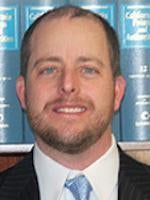A recent case in Los Angeles, California (Lani Guillmete, et.al. vs. City of Los Angeles, et. al. – L.A. Superior Court Case Number BC523080) illustrates the responsibility cities hold to take action once they learn that intersections or roadways are in dangerous conditions. If a city does nothing to correct the problem and someone is seriously injured or killed because of it, the city may be held liable to pay damages for the losses caused by the accident.
Background of the case
On Feb. 27, 2013, Thomas Guilmette, a 59-year-old rocket scientist, was riding his motorcycle on Summerland in San Pedro, California. Another man was driving his vehicle on Cabrillo when he tried to turn left onto Summerland, striking the rocket scientist and killing him. The defendant motorist had an obstructed view to his left and was unable to see the scientist because of a row of parked cars. The city did not have any no-parking signs in the area and allowed vehicles to park near the intersection despite the obstruction in vision. The decedent’s wife and son sued the city in a wrongful death civil lawsuit. The motorist was found to not be liable for the accident.
Plaintiffs’ arguments
At trial, the plaintiffs argued that the city had known about the problem with the intersection and had done nothing to correct the hazardous condition. They also contended that Mr. Guilmette lost his life because of the dangers posed by the intersection, and they presented evidence that he had been working on the Webb telescope and on satellites as a scientist at Northrop Grumman at the time of his death. The plaintiffs called experts in accident reconstruction, traffic and engineering and economics at trial.
Defendant’s arguments
The defendant city argued that there were no plans to improve the intersection before the accident. The defendant also claimed that the man’s death was caused by the actions of both the decedent and the other motorist who were involved in the accident. At trial, the city said it does nothing to determine whether or not a particular intersection is a dangerous one unless a citizen complaint is filed. The defendant called its own experts in traffic and engineering, accident reconstruction and economics. Under cross-examination, the city’s expert said he was unaware of any previous plans to correct the dangers of the intersection, despite being shown preexisting plans to add 31 to 35 feet of red curb at the intersection prior to the accident’s occurrence.
California rules applied
The action was filed based on the city’s negligence in failing to correct a dangerous condition of the intersection and roadway that existed there. In order to prevail in an action alleging a dangerous road or intersection condition, plaintiffs are required to show that the defendant had control of or owned the property and that the property had a dangerous condition when the accident occurred. They must then show that the dangerous condition resulted in the accident and that the plaintiffs suffered harm as a result. They must also show that the property owner either knew about or should reasonably have known about the existence of the dangerous condition but failed to take action to correct it.
Offer, trial and verdict
Before trial, the plaintiffs made a demand to settle the matter in the amount of $15 million. The city offered nothing, so the case went to trial before the jury. The trial lasted for 11 days, and the jury deliberated for 1 1/2 days before returning with a verdict in favor of the plaintiffs. They found that the city held 95 percent of the fault and the decedent held 5 percent of the fault in the accident’s cause. They awarded the plaintiffs a total of $23,665,931. Of that amount, $20 million was awarded for the plaintiffs’ non-economic losses and the remaining $3,665,931 was for the plaintiffs’ economic losses they suffered because of the loss of the decedent.



 />i
/>i

